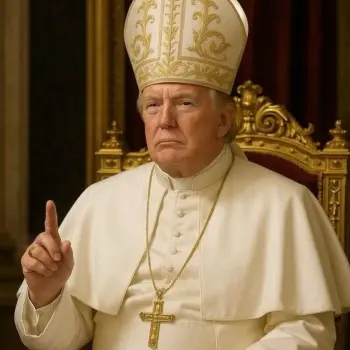The enormities of Christian mission are legion. And yet, in God's economy, there have also been abundant blessings. Selfless service, even unto death, of countless missionaries over the centuries has been offered to heal and educate, feed and shelter, deliver slaves and prisoners, and invite fellow human beings into greater relationship with God and neighbor.
The Meaning of Mission—
Remembering the Past
The Church of England began to engage in foreign mission soon after its explorers established new venues for colonization and settlement. The first official British missionary went to Goa, India, in 1519.3 By the late seventeenth century well-developed mission plans for India were emerging, naming seminaries, bishops, and theological and linguistic training as priorities, along with the ongoing work of evangelism and church building.
English missionary societies began to spring up as the seventeenth century gave way to the eighteenth, with the Society for Promotion of Christian Knowledge (SPCK) and the Society for the Propagation of the Gospel in Foreign Parts (SPG) established in 1698 and 1701, respectively. The SPCK focused on printing and distributing religious literature, and on basic education for poor children, both boys and girls. It emerged from the bishop of London's sending of Thomas Bray to Maryland to examine the state of the Anglican Church on American shores. Bray sent back a report commenting on its lack of spiritual vitality, and he eventually went to work establishing parish libraries for the edification of clergy and people in American congregations.
The SPG was instrumental in supporting the presence and growth of the Church of England in the American colonies, both by providing clergy stipends and by encouraging missionary efforts with unevangelized peoples, including slaves.
We mustn't neglect the influence of the Wesley brothers on Anglican mission, particularly in the American colonies. John and Charles Wesley, the Anglican priests who founded Methodism, sailed to the colony of Georgia in 1735, at the invitation of Governor Oglethorpe, hoping to missionize the Native Americans. Their encounter with Moravians on the voyage to the colonies was also a significant chapter in the developing strand of evangelical Anglicanism.
The principal Anglican evangelical mission society was founded in 1799 as the Society for Missions in Africa and the East, though it came to be known as the Church Mission Society (CMS). Among its founders were William Wilberforce and others who sought to end the slave trade. This was the first major Anglican mission group to reach indigenous peoples in Asia and in significant reaches of Africa.
The last of the major British mission societies to be formed was the Universities' Mission to Central Africa (UMCA), inspired by David Livingstone's lectures on his return to England from Africa in the 1850s. Founded in 1857 to promote an Anglican presence in central Africa and to work for an end to the slave trade, it was the first English society to use a model based on sending missionary bishops, and the first to train black Africans as priests. The UMCA was based on an Anglo-Catholic perspective and persisted until 1965, when it merged with the SPG to become the United Society for the Propagation of the Gospel.
The Episcopal Church in America, seeing this rising stream of missionary societies in its mother church, made a different response. Rather than encouraging the formation of a number of different societies, in 1820 it changed its name to the Domestic and Foreign Missionary Society, and decreed that all Episcopalians were members. In The Episcopal Church, we don't have missionary societies—we are one, and that has made a significant difference in how Episcopalians have gone about mission work.
Jackson Kemper was The Episcopal Church's first missionary bishop, consecrated in 1835 and sent out to the western frontier to work with Native Americans and settlers. The second one went to Shanghai, and the next to the Ottoman Empire. They were followed by bishops sent to Liberia and Japan. Eventually mission work began in places that were or became effective US colonies: the Philippines, Cuba, the Virgin Islands, Puerto Rico; and in places with American commercial or diplomatic interests: Brazil, Mexico, Panama, Guatemala, Paris, Nice, Rome, and other European cities. Many of those are now separate Anglican provinces; most of the remainder are still part of The Episcopal Church.
We have to look back to the English Reformation and the Elizabethan settlement to make some sense of the variety of mission agencies that flourished in the eighteenth and nineteenth centuries. The Church of England as a separate and established religious tradition really dates to the late sixteenth century, following struggles between the remaining Roman Catholic presence and the emerging reformed or protestant church. Elizabeth I insisted that her people would worship together using a common liturgy in English, but the state would not dictate the particulars of anyone's belief. There is room in this church, she said, for a variety of opinions about hotbutton theological issues, which in those days were about just how Jesus is present in the Eucharist. Three broad parties resulted, or solidified, in the decades after the English Reformation began.




